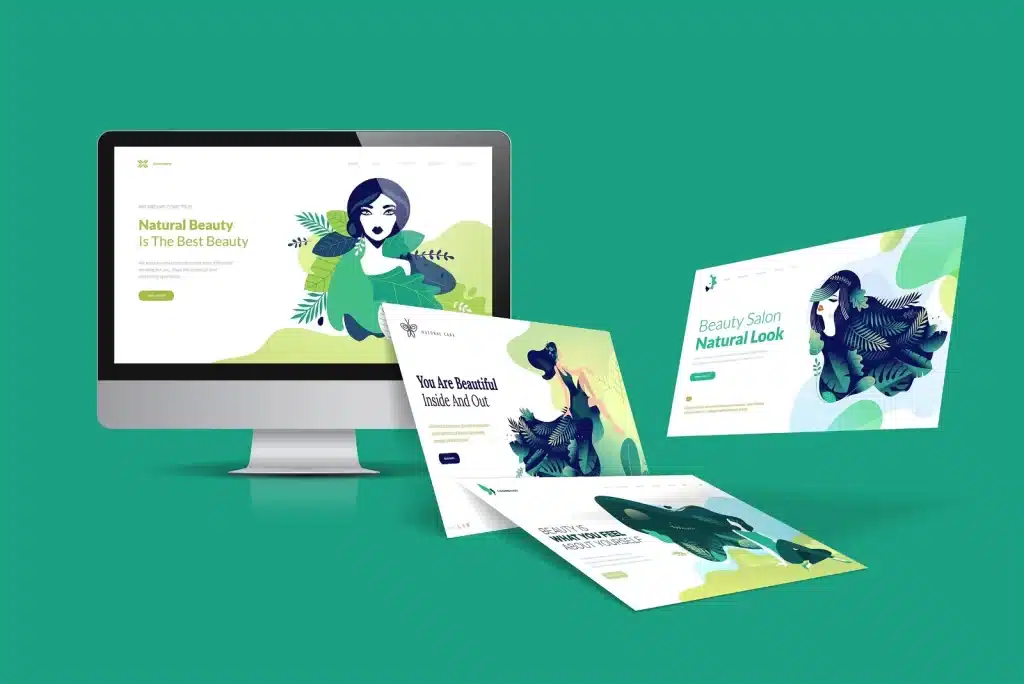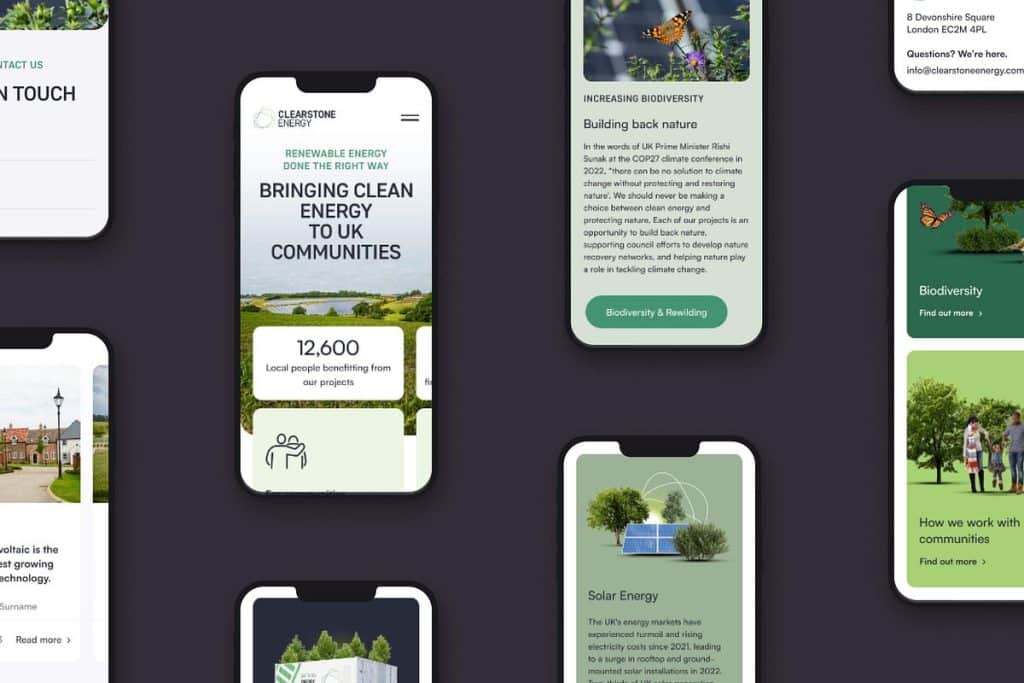In a digital landscape where sustainability is gaining momentum, the concept of eco-friendly web design is becoming increasingly significant. As websites continue to proliferate, the environmental impact of these digital platforms cannot be overlooked.
By adopting best practices for sustainable web design, businesses and designers can not only reduce their carbon footprint but also contribute to a greener online ecosystem.
The evolution of web design trends 2024 towards eco-friendliness raises intriguing questions about the future of digital creativity and user experience, prompting a shift towards more mindful and environmentally conscious design solutions.
Exploring Top 5 Web Design Trends 2024 for Eco-Friendly Websites
As we look ahead to 2024, it is crucial for web designers to consider the environmental impact of their design choices. By understanding the influence of web design trends 2024 on the environment, we can adopt practices that promote sustainability and eco-friendliness.
Let’s explore the top 5 web design trends 2024 for eco-friendly websites that can help reduce our digital footprint and contribute positively to the planet.
Understanding the Impact of Your Web Design Choices on the Environment
As web design trends 2024 evolve towards sustainability, one crucial aspect to consider is the optimization of images for faster loading times and reduced energy consumption. By adopting techniques such as compressing images without compromising quality and utilizing modern image formats, designers can significantly contribute to creating greener web experiences.
Understanding the impact of image optimization on a website’s environmental footprint is essential for aligning design choices with eco-friendly principles in 2024.
Optimizing Images for Faster, Greener Web Experiences
In the realm of eco-friendly web design, a pivotal aspect that significantly influences the environmental impact of websites is the optimization of images for faster loading speeds and reduced energy consumption.
Implementing efficient image compression techniques, utilizing modern image formats like WebP, and incorporating lazy loading can improve user experience, decrease bounce rates, and contribute to creating more sustainable web design trends 2024 for eco-friendly websites.

The Future of Web Design: Creating Sustainable Websites in 2024
As we look ahead to 2024, the future of web design is centered on creating sustainable websites that prioritize eco-friendly practices.
In this digital landscape, key elements such as optimizing energy efficiency, reducing carbon footprints, and using renewable resources will play a crucial role.
Designers must adapt to these trends to ensure that websites are not only visually appealing but also environmentally responsible in the years to come.
Key Elements of Sustainable Web Design in the 2024 Digital Landscape
Sustainable typography is emerging as a pivotal trend in the realm of web design for 2024.
The selection of fonts and the way they are utilized can significantly impact a website’s sustainability.
In the ever-evolving digital landscape, incorporating eco-conscious typography practices is crucial for creating environmentally friendly websites.
Sustainable Typography: A Key Trend in 2024 Web Design
Implementing eco-conscious typography practices is poised to revolutionize the way web designers approach visual elements in 2024.
Sustainable typography focuses on using fonts that consume less energy and resources, optimizing text layout for improved readability while reducing environmental impact.
Web Design Process 2024: Building Sites That Care for the Planet
Web design in 2024 is not just about creating visually appealing websites; it’s about making conscious choices that benefit the environment. Balancing aesthetics and sustainability will be crucial in the development process, ensuring that websites are not only beautiful but also eco-friendly.
As we move forward, building sites that care for the planet will be a defining feature of responsible web design practices.
Balancing Aesthetics and Sustainability in Modern Web Design
The efficient utilization of coding practices in web design plays a pivotal role in reducing energy consumption.
By optimizing code, developers can create websites that not only look visually appealing but also contribute to sustainability efforts.
Emphasizing efficiency in coding is a crucial step towards building sites that care for the planet.
Efficient Coding Practices for Reduced Energy Consumption
Incorporating optimized coding techniques is paramount in the pursuit of reducing energy consumption in web design practices. By streamlining code, eliminating unnecessary scripts, and utilizing efficient algorithms, websites can operate with lower energy demands.
Minifying files, reducing server requests, and implementing lazy loading for images are effective strategies to enhance performance and decrease the environmental impact of websites, contributing to a more sustainable digital landscape.

How Eco-Friendly Websites Are Shaping Web Design Trends in 2024
As sustainability continues to be at the forefront of global concerns, the evolution of eco-friendly websites is significantly influencing the current web design trends 2024. In this digital era, where environmental consciousness is becoming increasingly prevalent, web designers are adapting their practices to align with eco-friendly principles.
One notable trend shaping web design in 2024 is the emphasis on minimalist and clean designs. By reducing unnecessary elements such as large images, complex animations, and excessive plugins, designers are creating websites that not only load faster but also consume less energy. This streamlined approach not only benefits the environment but also enhances the user experience by providing faster load times and easier navigation.
Another trend gaining momentum is the use of sustainable web hosting services. Web hosting providers are offering eco-friendly options powered by renewable energy sources such as wind or solar power. By choosing these green hosting services, website owners can significantly reduce their carbon footprint, contributing to a more sustainable web ecosystem.
Moreover, the adoption of responsive design techniques is on the rise in 2024. Responsive design ensures that websites function seamlessly across different devices and screen sizes, eliminating the need for separate mobile versions. This not only improves user accessibility but also reduces energy consumption by optimizing the website’s performance on all devices.
Innovative Strategies for Eco-Friendly Web Design in 2024
As the digital landscape evolves, the demand for eco-friendly web design practices in 2024 continues to grow. This necessitates the exploration of innovative tools and techniques to develop websites that are sustainable and environmentally conscious.
Implementing these strategies will not only benefit the planet but also enhance user experience and engagement.
Tools and Techniques for Developing Eco-Friendly Websites in 2024
When creating an eco-friendly website in 2024, one key strategy is to utilize green hosting solutions. These hosting options are designed to minimize the environmental impact of your website by using renewable energy sources and energy-efficient technologies.
Leveraging Green Hosting Solutions for Your 2024 Website
Implementing sustainable practices in web design can be effectively achieved by leveraging green hosting solutions for your 2024 website.
Green hosting providers use renewable energy sources, such as wind or solar power, to power their data centers.

Conclusion
In conclusion, sustainable web design is crucial for creating eco-friendly websites in 2024. By incorporating innovative strategies and adopting environmentally conscious practices in the web design process, we can contribute to a more sustainable future.
It is important for web designers to prioritize the planet and consider the environmental impact of their work to ensure that websites are not only visually appealing but also environmentally responsible.
How Can Web Designers Incorporate Biophilic Design Elements Into Eco-Friendly Websites in 2024?
Incorporating biophilic design elements into eco-friendly websites involves integrating natural patterns, materials, and visuals to enhance user experience. By leveraging nature-inspired aesthetics, web designers can create engaging digital environments that promote well-being and sustainability.
What Are Some Unique Ways to Reduce the Carbon Footprint of a Website in 2024?
In 2024, reducing a website’s carbon footprint can involve optimizing code, utilizing efficient web hosting services, implementing caching mechanisms, minimizing HTTP requests, and reducing image sizes. These strategies contribute to a more eco-friendly online presence.
Are There Any Emerging Technologies That Can Help Optimize Web Design for Sustainability in 2024?
In 2024, emerging technologies like AI-powered optimization tools, efficient serverless architectures, and sustainable hosting solutions are revolutionizing web design for sustainability. These advancements offer new opportunities to reduce environmental impact and create eco-friendly websites.


